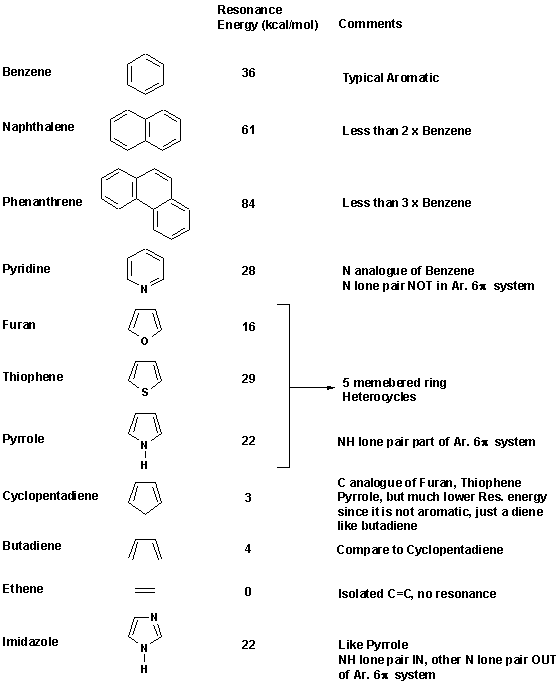 |
The diagram shows
the experimental heats of hydrogenation, ΔHh,
for three molecules, benzene, 1,3-cyclohexadiene and cyclohexene. These
are related in that under appropriate conditions that can all be
reduced
to the same product, cyclohexane.
The ΔHh for
"cyclohexatriene",
a hypothetical molecule in which the double bonds are assumed to be
isolated
from each other, is calculated to be 3 times the value for cyclohexene.
This value reflects the energy we could expect to be released from 3
isolated
C=C.
By comparing this value with the
experimental value for benzene, we
can conclude that benzene is 152 kJ or 36 kcal / mol more stable than the hypothetical system. This is the resonance energy for
benzene.
What is the resonance energy of
1,3-cyclohexadiene ? ANSWER
|

